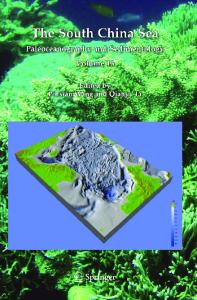The profound influence of Kuroshio intrusion on microphytoplankton community in the northeastern South China Sea
- PDF / 2,779,652 Bytes
- 9 Pages / 595 x 842 pts (A4) Page_size
- 94 Downloads / 364 Views
The profound influence of Kuroshio intrusion on microphytoplankton community in the northeastern South China Sea Xingzhou Wang1, 2, Yuqiu Wei1, 3, Chao Wu1, Congcong Guo3, Jun Sun1* 1 Research Centre for Indian Ocean Ecosystem, Tianjin University of Science and Technology, Tianjin 300457, China 2 College of Food Science and Engineering, Tianjin University of Science and Technology, Tianjin 300457, China 3 Institute of Marine Science and Technology, Shandong University, Qingdao 266200, China
Received 2 April 2019; accepted 30 May 2019 © Chinese Society for Oceanography and Springer-Verlag GmbH Germany, part of Springer Nature 2020
Abstract
To further understand the effect of Kuroshio intrusion on phytoplankton community structure in the northeastern South China Sea (NSCS, 14°–23°N, 114°–124°E), one targeted cruise was carried out from July to August, 2017. A total of 79 genera and 287 species were identified, mainly including Bacillariophyta (129 species), Pyrrophyta (150 species), Cyanophyta (4 species), Chrysophyta (3 species) and Haptophyta (1 species). The average abundance of phytoplankton was 2.14×103 cells/L, and Cyanobacterium was dominant species accounting for 86.84% of total phytoplankton abundance. The abundance and distribution of dominant Cyanobacterium were obviously various along the flow of the Kuroshio, indicating the Cyanobacterium was profoundly influenced by the physical process of the Kuroshio. Therefore, Cyanobacterium could be used to indicate the influence of Kuroshio intrusion. In addition, the key controlling factors of the phytoplankton community were nitrogen, silicate, phosphate and temperature, according to Canonical Correspondence Analysis. However, the variability of these chemical parameters in the study water was similarly induced by the physical process of circulations. Based on the cluster analysis, the similarity of phytoplankton community is surprisingly divided by the regional influence of the Kuroshio intrusion, which indicated Kuroshio intrusion regulates phytoplankton community in the NSCS. Key words: phytoplankton, community, Kuroshio, South China Sea Citation: Wang Xingzhou, Wei Yuqiu, Wu Chao, Guo Congcong, Sun Jun. 2020. The profound influence of Kuroshio intrusion on microphytoplankton community in the northeastern South China Sea. Acta Oceanologica Sinica, 39(8): 79–87, doi: 10.1007/s13131-0201608-y
1 Introduction Phytoplankton contributes approximately 50%–60% of the primary production in the ocean, and plays an important role in maintaining the stability of different marine ecosystems (Sun, 2011). Due to its high diversity and typical sensitivity to human activities and climate change, phytoplankton is also a key initiator for the variation in marine environment (Tang et al., 2017). Phytoplankton species composition or dominant species distribution can reflect the physical and chemical environment, such as nutrients, temperature and light in water. Phytoplankton community sustainability can reflect the impact of human activities on the marine ecological environme
Data Loading...











